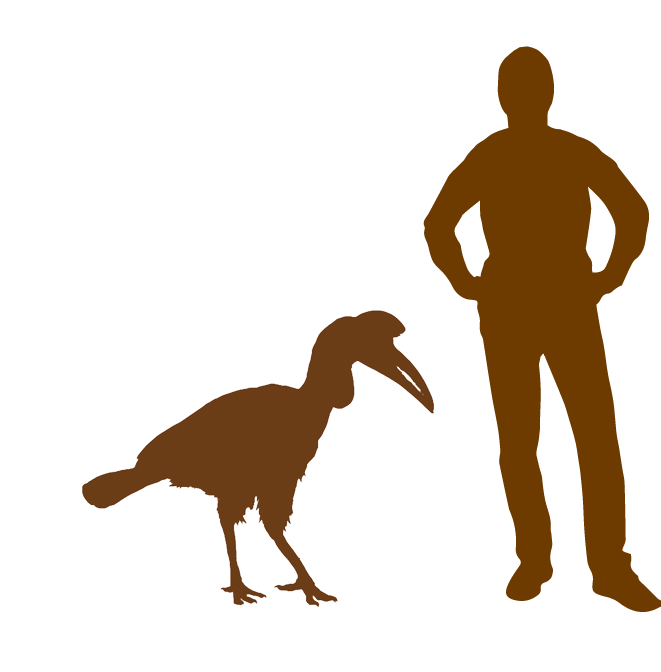
Northern Ground-hornbill
Bucorvus abyssinicus
(buk-or-vus ab-is-in-e-kus)

Hornbills are known for being large birds, but the ground-hornbill is much larger than the others, reaching around 4 feet (130 cm) long and weighing around 8 pounds (4 kg). They also have long, lanky legs to help them walk long distances. There are two species of ground-hornbill—the southern ground-hornbill and the northern ground-hornbill—each just as unusual as the other. Aside from their slightly different names, they also look a little different. For instance, the northern ground-hornbill’s throat is blue and red, and it has blue patterning around its eyes.
Their large casques, or horns, aren’t quite the same, either: The northern ground-hornbill’s casque is curvier and features extra embellishments, like the bulky tube-shaped portion on top.
Where They Live
Their name gives it away—these hornbills spend most of their time on the ground. You’ll track them down in dry, rocky parts of northeastern Africa, such as Kenya, Uganda, Ethiopia, and Somalia. At night, they roost in the holes of trees or stumps, or in rock crevices.
What They Eat
Unlike helmeted hornbills, ground-hornbills are carnivorous, which means they mainly eat animals. Their beaks didn’t evolve to eat fruits or plants, so insects and spiders make up most of their meals—though sometimes they catch reptiles like lizards and snakes, or even small mammals.
Close Relations
They are related to the helmeted hornbill (page 62), which has a similar bony casque.
Conservation Status
Least Concern

Northern ground-hornbills have a wide range and large numbers, so they’re not considered to be in danger of extinction. However, they still face threats, such as being eaten by large mammals or dying from disease. Occasionally humans will hunt them for food or kill them because they’re seen as pests or symbols of bad luck.

Fun Facts
